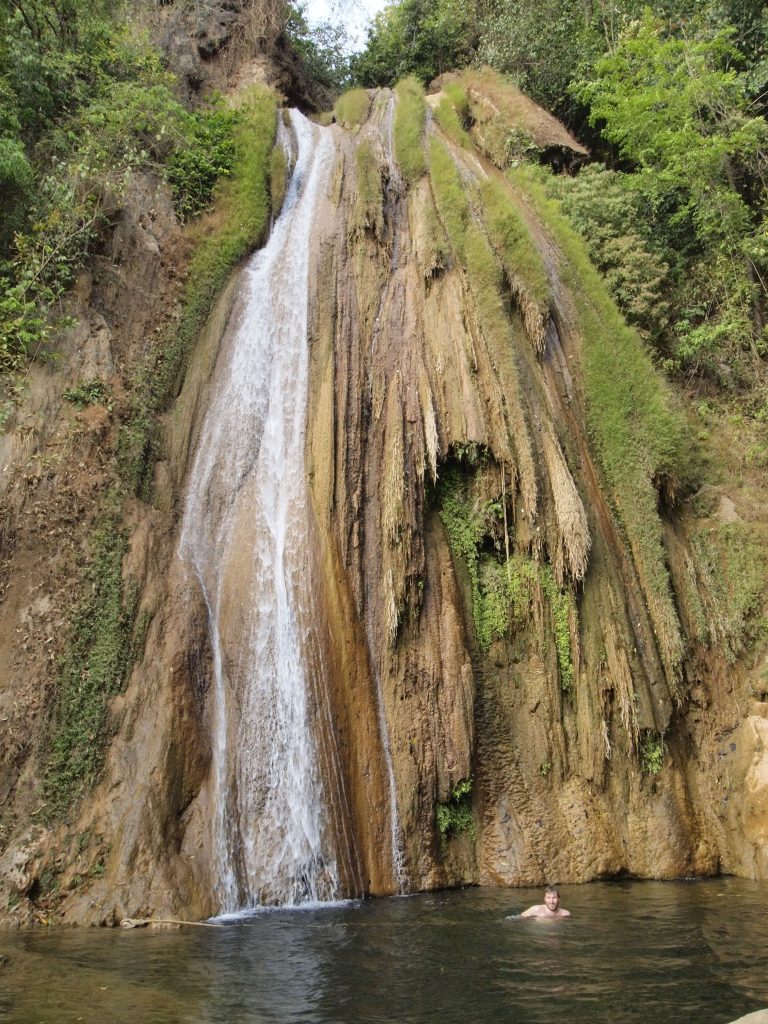The road to Mandalay
I jump on the night bus from Inle Lake to head to Mandalay. On the same bus is one of the guys from my boat tour and we settle down for the long, bumpy, and windy ride. The bus drops us off at the main railway station at 4.30am, about 1km from the hostel. Yes, it’s another Ostello Bello!
It’s too early to check in, but early arrivals are the norm and they send us up to the rooftop bar. Here there are couches offering a comfy and quiet place for few hours’ sleep.
Exploring the ancient cities of Mandalay
The Mandalay dawn is as hazy as it is in the rest of the country. It’s only a couple of days later that I realise I can see the famous Mandalay Hill from the hostel rooftop, brightly lit at night. We find a few other travellers here from our journey across the country and together we decide to hire scooters and explore the ancient cities that surround Mandalay.
Unlike Bagan, it is possible to hire a scooter in Mandalay. We found a rental place around the corner from our hostel and with a copy of our passport secured our wheels for the day. We set off across town on a scooter each. You can’t miss us – we have pastel blue and baby pink-coloured scooters, covered in cartoon stickers.
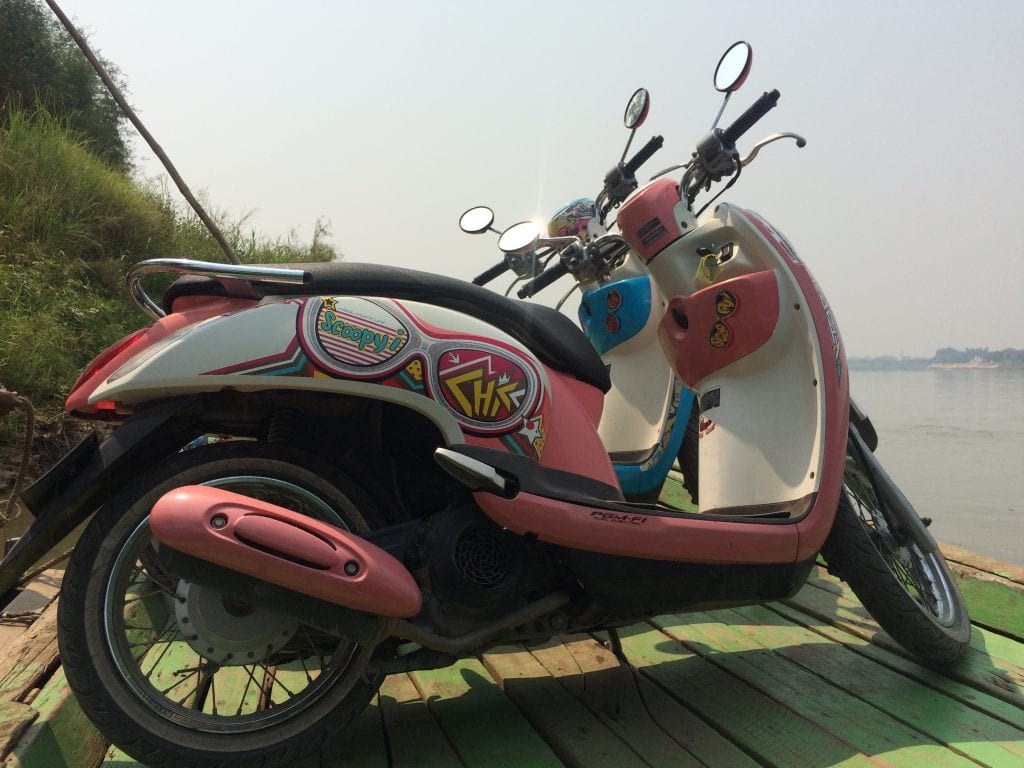
Inwa, the ancient capital
We head to the ancient city of Inwa on a route that takes us through some of the busier city avenues and the Buddha statue-carving road where scores of stone carvers are working on their trade, covered in white dust. The roads are chaotic and full of black smoke from trucks and dust from the road. After a couple of wrong turns, we figure out the route to the river crossing and load the scooters onto the boat that takes us across the 300m of the Myitnge River, a tributary of the Irrawaddy River.
From here, we explore the ancient city’s pagodas. We drive along dirt tracks and walk barefoot through the stupas and temples (no shoes are ever allowed in temples). Eventually, the soles of our feet start to get hot under the midday sun, and we settle down for a refreshing drink.
As we sit in a roadside café, one of the many horses and carts used to ferry tourists around is chugging past us. We watch with slow-motion horror as the horse stumbles, trips, and tips its cart over all the parked scooters, causing a domino effect. The one with the most damage is one of ours!
However, it’s still driveable so we take some photos to show the owner what happened. (We end up bartering down to US$30 to cover some minor damage.)
From here we head to one of the oldest monasteries in the area, and one made entirely of wood. It’s here that the generosity of the people becomes apparent. A lady on a picnic with her family sees us and brings us some of the fruit from their spread. They may not have much, but they want to share it with the foreigners and in the heat of the day some juicy grapes are very welcome.
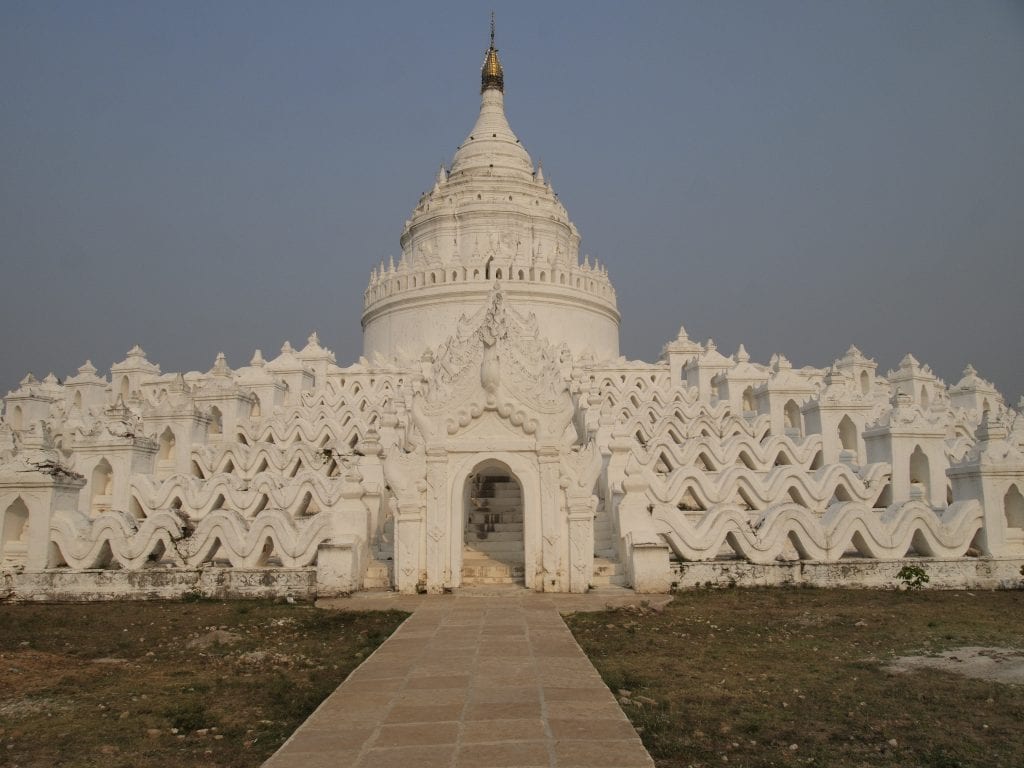
From Inwa to Mingun
We spend the rest of the day winding our way through the narrow streets of Mandalay’s suburbs between the ancient cities of Inwa and Mingun, riding alongside the river for large parts of it. We ride over the iconic cantilever iron Ava Bridge that spans the Irrawaddy River. It was the only way to cross the bridge for decades, before being destroyed during World War II. They rebuilt it in 1954, following Burmese independence. Nowadays, there are other bridges but there is something romantic about riding over Ava Bridge that you don’t feel anywhere else, despite the insane, incessantly honking traffic.
In Mingun, we wander around Hsinbyume or Myatheindan Pagoda – the dazzling white pagoda locals revere, and where cows are free to roam. I sit through dozens of photos with the locals who queue up for a photo op as I seem to be an interesting attraction. So much so, that my travel buddies not only think it is hilarious, but get in on the act by snapping away themselves.
Finally, I extricate myself and we head to the incomplete Mingun Pahtodawgyi (stupa). Legend has it that it was never finished because an astrologer predicted that on completion, the king would die. However, you can climb up stairs along the sides as well as stand under the world’s largest bell – weighing more than 90 tons.
We make our way back to the city in the twilight. I had not quite known what to expect of Mandalay, and almost didn’t come this far north, but I’m glad I did. Glimmering white and gold pagodas that reflect the evening sun cover the surrounding hills. If this is what it looked like hundreds of years ago, I can see how it became such a spiritual and important place for the Burmese. It is enchanting and moving at the same time.
As we enter the city, I’m assaulted by a noise I haven’t heard for months. Birdsong. Thousands of birds are singing their little hearts out as the sun sets and they prepare for the evening. I have never heard so many birds at once nor so loud; they are louder than the horns! I can’t stop smiling as I ride along – perhaps not all wildlife has been decimated in Southeast Asia and there is some hope left.
Where to stay, eat and drink in Mandalay
With a limited number of hostels in the country, I once again chose the Ostello Bello. Clean, very comfortable (with great air conditioning!), a decent breakfast and lovely rooftop bar, it’s a good place to rest and meet other travellers. It also has good WiFi and served me well at the times when I needed to get some work done.
There is not as much street food around here as there is in Yangon, but there are a few local restaurants with tables spilling out onto pavements in the evenings and some of the freshest food around. With a growing number of tourists, new places are popping up all the time. Check with your hostel/hotel for the best options around where you are staying.
What to do and see in and around Mandalay
Mandalay may be steeped in history, but that’s not the only reason to visit. As well as the ancient cities, stupas and pagodas mentioned, its landscapes, waterfalls and sunsets are just as impressive. In fact, the sunsets in Myanmar are some of the best I have seen. A few other things that are well worth doing and seeing when you’re in Mandalay include:
U Bein Bridge
At over 1k long, U Bein Bridge is the world’s longest teak bridge. It’s a short drive from the city, close to Amarapura. Locals flock here every day, and Burmese monks stroll along it at sunset – by far the best time to visit, even though it can be busy.
If the water level is relatively low, you can get some superb photos of the reflection of the setting sun on the lake. Sit on the banks drinking in the sunset or splash out for a boat to take you onto the water for a quieter experience. Street vendors sell water and soft drinks and you can also visit the nearby Amarapura market.
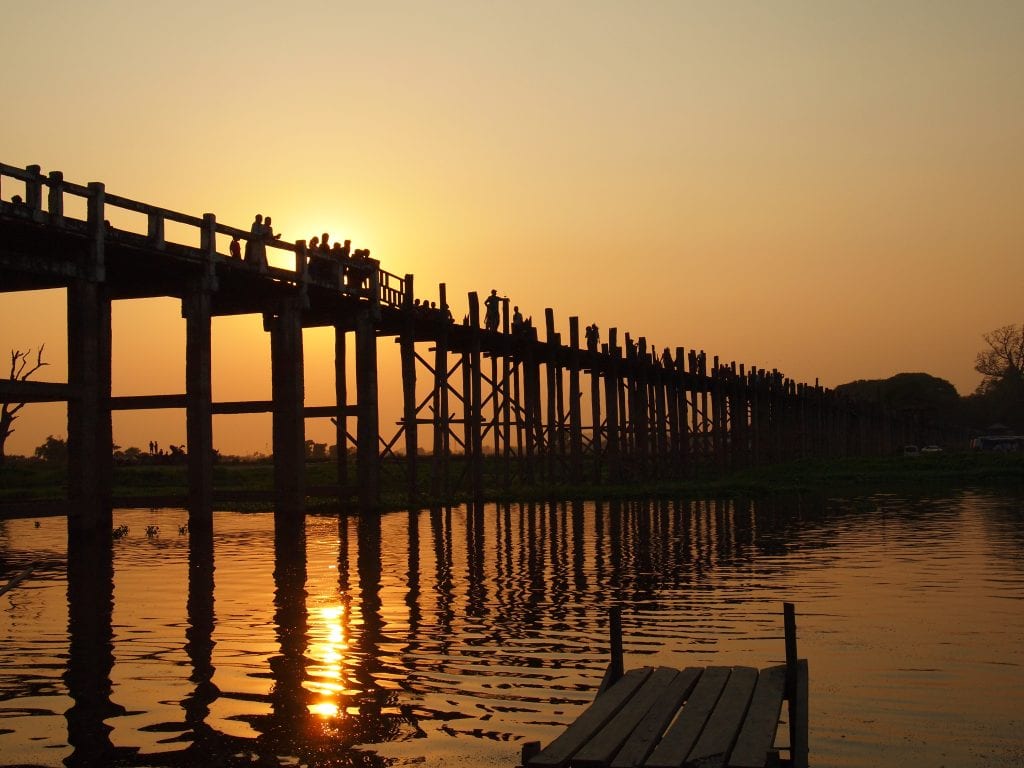
Mandalay Palace
Cross the moat to enter the reconstructed royal Mandalay Palace. Almost completely destroyed by bombing during World War II, this former royal residence was rebuilt in the 1990s and is now a major tourist attraction. Wander around the grounds and view reconstructions of the royal rooms and climb the original watch tower – one of two buildings to survive, the other being the royal mint – for a bird’s eye view of the grounds and city. Access is from the east gate. Take your ID with you, they may ask you for it.
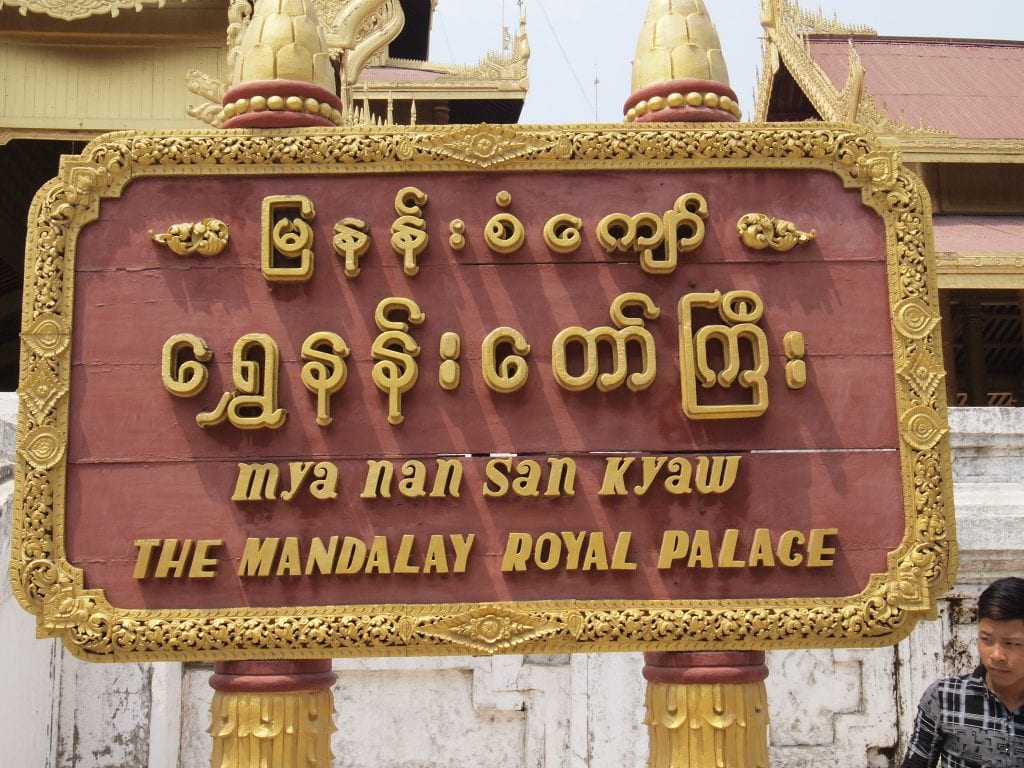
The world’s biggest book, Kuthodaw Pagoda
Not quite what you would expect, the world’s largest book is a series of stone tablets housed behind bars in individual white stupas. There are 729 stupas arranged around the golden Kuthodaw Pagoda and found at the foot of Mandalay Hill. The pages form the text of the Tipitaka, the Buddhist scriptures.
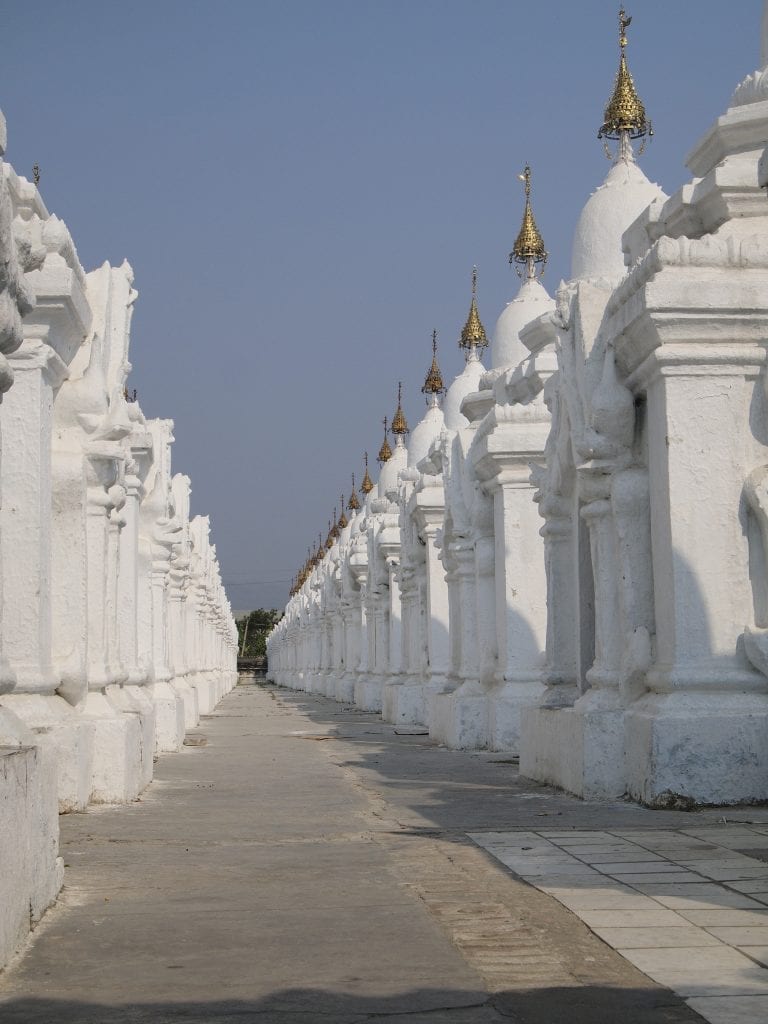
Cool off in the river or waterfalls around Mandalay
Tired of temples, pagodas, and stupas, and feeling the heat? Cool off in the river or one of the waterfalls outside the city. We took the main highway (number 1) south, out of Mandalay, heading towards Dee Doke waterfalls and took a dip in the Myitnge River before hiking up the falls for a dip in one of the six refreshing waterfalls in the area. There are small villages along the way where you can stop off for lunch. Be prepared for some sign language communication as they don’t speak much English this far out of the city!
